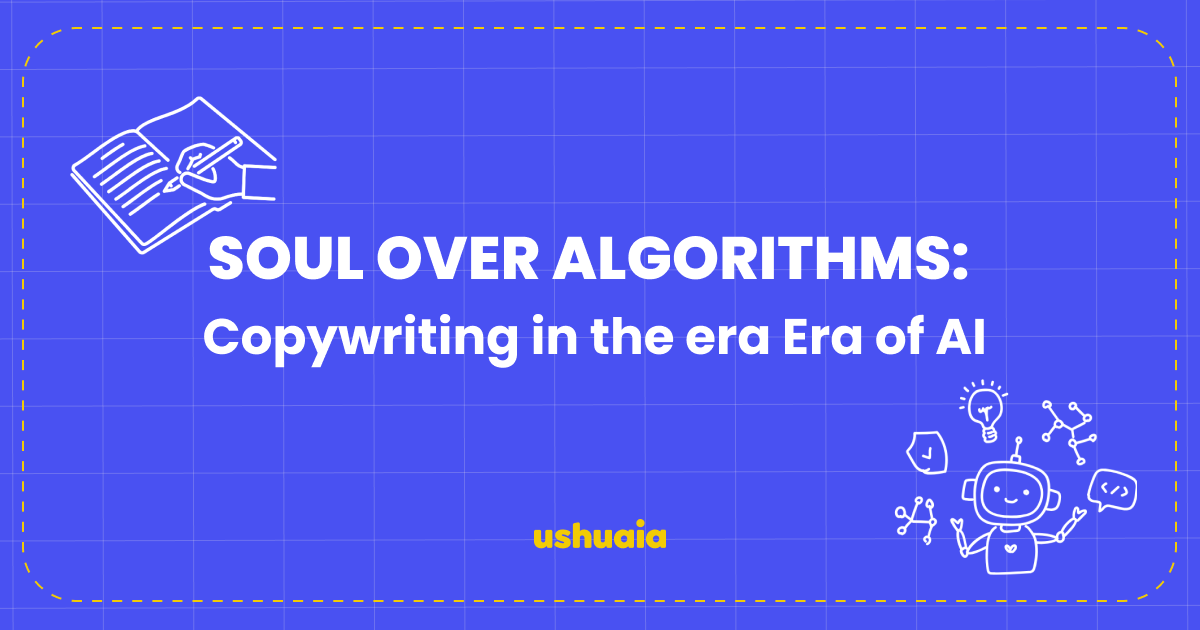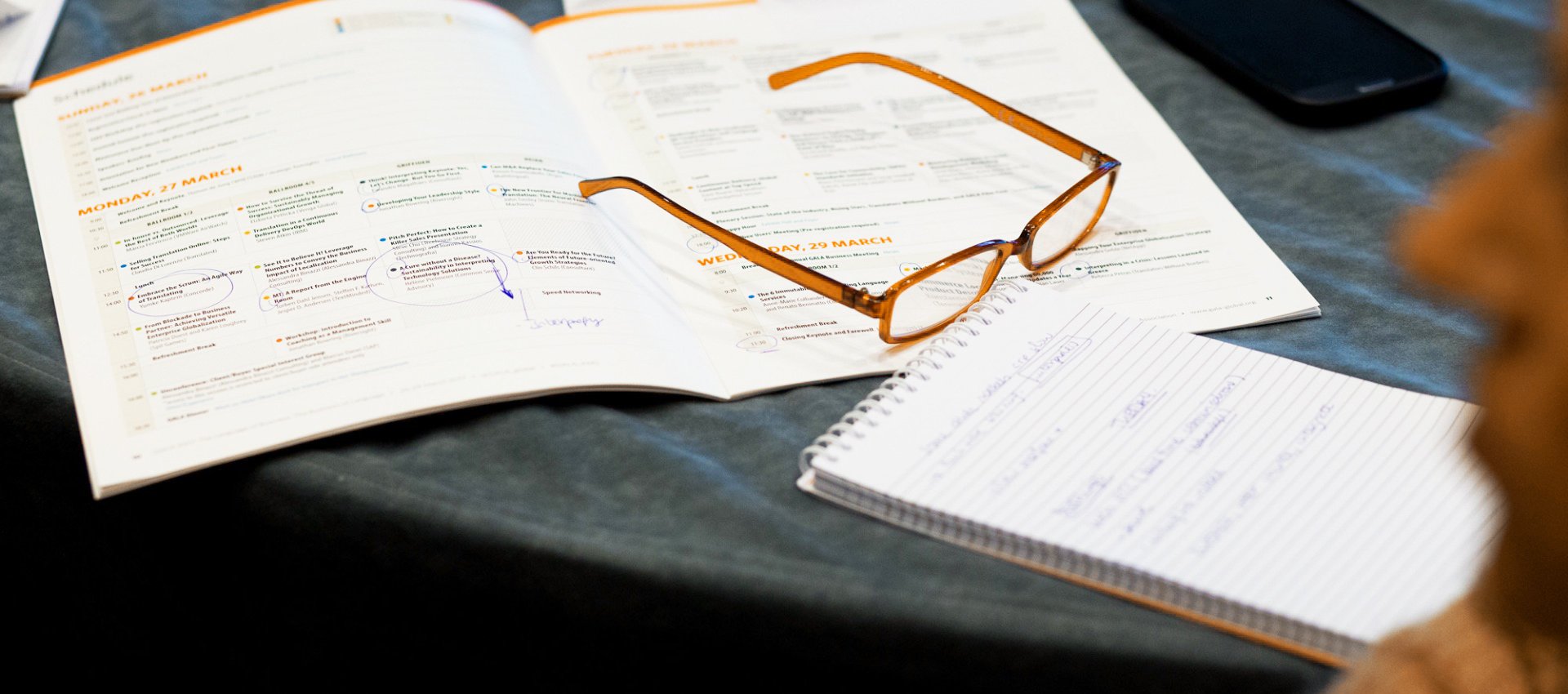- Home
- Resource Center
- Articles & Videos
- Soul over algorithms: Copywriting in the Era of AI
2 June 2025
Soul over algorithms: Copywriting in the Era of AI

Expand Your Localization Expertise. Subscribe to Our Newsletter!
In today’s fast-paced digital world… I’m sure you’ve heard this opening sentence more than a thousand times now —often accompanied by Some Title Written Like This 🚀✨. It’s the typical AI-generated sentence when your prompt is “Please write an article about…” or “Help me improve this draft…”.
Don’t get me wrong, I’m not against chatbots or using AI to embellish our copywriting, check grammar mistakes, or do a little brainstorming. But when we’re all inundated with AI-generated content, what can we, as copywriters or transcreators, bring to the table?
Where can we find the beauty of human copywriting when machines seem to be able to do everything?
The Limits of AI in Copywriting
AI has slowly made its way into the copywriting process, helping to automate simple mundane tasks, such as spell checking and grammar correction. It’s nothing new. We’ve all used technology that way. Then, AI expanded to help us with keyword analysis, content optimization, rephrasing... Today, AI tools can produce entire pieces of content on their own, with just a little input. But should we rely totally on them?
AI-powered copywriting seems to be all rainbows and unicorns for agencies and marketing consultancies. One of the biggest perks is speed. With AI, we can create all types of content faster.
What’s more, with the right prompts, we can also ensure consistency easily, without having to spend time reading lengthy guidelines and examples. But as it happens with all AI-generated material, whether it’s images, translations or copywriting, it needs to be reviewed by a professional. We can't rely 100% on that. Why? To name just one reason, AI doesn’t usually identify nuances and cultural references. Recent research on ChatGPT's cultural representations revealed significant inaccuracies, raising concerns about its ability to adapt globally.
And there is also the big elephant in the room: AI lacks the wit and humor of a good copywriter. Some studies have shown AI models do not understand jokes, and others have explored the ethical issues about using AI for jokes. I have yet to come across an AI-generated text that has made me think "wow". When you want generic texts, AI works well, but if you have projects that require your true experience as a copywriter, your knowledge of a market, your analysis of linguistic peculiarities and lexical figures, it’s just not there.
Quiz: Can AI Handle the Real Challenges of Copywriting?
Let’s play a little game. These past weeks, I have been experimenting with AI-generated text to see how they could fit in my work as a copywriter. So I came up with a fun little challenge—a way to put AI to the test and see if it’s truly ready to join my creative team.
Imagine a client asks you to “create a catchy, memorable slogan in Spanish to promote a new brand of cookies made from fresh oranges. The food is targeted at consumers in Paraguay and northern Argentina, emphasizing its natural and healthy qualities. Keep it short, vibrant, and easy to remember.” Well, here we encounter the first obstacle. No client is ever so clear about their idea. The first job of a project manager, copywriter, or marketer is organizing the client’s request into a briefing, understand it, delimitate the audience, identify the goals of the project. Generally, this is the result of one or more meetings with the client. AI is of little help here.
Well, once we have organized the client’s request and scope of the project, we can move on to the prompt.
Round 1
I asked different AI chatbots (Deepseek, ChatGPT 4-o, and Claude 3.7 Sonnet) to “create a catchy, memorable slogan in Spanish to promote a new brand of cookies made from fresh oranges. The food is targeted at consumers in Paraguay and northern Argentina, emphasizing its natural and healthy qualities. Keep it short, vibrant, and easy to remember”, and here are their replies:
- Deepseek suggested: "¡Naranja que alimenta, dulce que enamora!" (Translation: "Orange that nourishes, sweetness that charms!")
- ChatGPT 4-o came up with a similar idea: "Naranja pura, sabor que dura." (Translation: Translation: "Pure orange, flavor that lasts.")
- Claude 3.7 Sonnet tried a different approach: "Del naranjal a tu paladar: Cookies Naturales" (Translation: "From the orange grove to your palate: Natural Cookies")
All these options are acceptable: they make sense in Spanish and have some rhythmic sound, maybe too much rhythm if I may say. The golden age of ad jingles and rhyming slogans was between the 1940s and the 1970s. In the 21st Century rhyme in slogans sounds outdated. Anyway, all these options are ok, but they lack emotional depth —and, more importantly, localization.
The message could work in any Spanish-speaking country, but the client specifically requested a copy tailored to Paraguay and northern Argentina. This region is defined by its sweltering heat and rich wilderness, its deep Guaraní heritage, its distinctive cuisine—sopa paraguaya, chipa, mbeyú—, and of course mate and tereré. Yet none of that is reflected in any of the slogans suggested by AI.
Maybe we can try improving the prompt to see if the result would be better. Again, all the work of prompt creation should be handled by a linguist or creative writer.
Round 2
My prompt this time for the same AI chatbots (Deepseek, ChatGPT 4-o, and Claude 3.7 Sonnet) was: “You are an experienced copywriter and creative marketeer. A client has asked you to create a catchy, memorable slogan in Spanish to promote a new brand of cookies made from fresh oranges, emphasizing its natural and healthy qualities. The slogan is targeted at consumers in Paraguay and northern Argentina. This region is defined by its sweltering heat and rich wilderness, its deep Guaraní heritage, its distinctive cuisine, mate and tereré. Keep it short, vibrant, and easy to remember. Do not abuse the rhyme. The visual asset of the campaign includes oranges.”
- Deepseek suggested: "Naranja fresca, dulce naturaleza." (Translation: Fresh orange, sweet nature) and also added an alternative (more playful) version: "Galletas que saben a sol naranja." (Cookies that taste like orange sun.)
- ChatGPT 4-o replied: “Pura naranja, puro sabor.” (Translation: Pure orange, pure flavour).
- Claude 3.7 Sonnet suggested one slogan "Naranja Natural, Frescura Vital" (Translation: Natural Orange, Vital Freshness) and then added alternative options: "El Sabor del Sol, Naturalmente Dulce" (The Flavor of Sun, Naturally Sweet) and "Naranja Pura, Energía Segura" (Pure Orange, Assured Energy)
The second round improved the output. There are some interesting ideas to play with, like the integration of nature, the sun, etc. In addition, some useful figures of speech appeared, like the repetition of words in ChatGPT’s proposal. But the slogans are far from being perfect yet.
Now, would a professional create better slogans? Probably.
What Would a Human Do?
Before starting this little test with AI chatbots, I drafted some ideas. They may not be perfect either, but they have real heart and soul in them.
To address the petition of being “catchy and memorable” and also “easy to remember”, I decided to use alliteration or repetition of words, and avoid rhyme. As far as the region is concerned, I suggested involving mate or tereré in the slogan, a typical companion of this kind of cookie and a very well-known object in the area where consumers live. Additionally, taking into account the sweltering heat of the region, I tried playing with words like “fresh” and “refreshing”.
As the visual asset of the campaign includes oranges, I also tried approaching the slogan without specifically mentioning oranges but still emphasizing the “natural and healthy qualities” of the cookies. Following this thought, I decided to refer to “diet” in some proposals, a very common practice in the region, usually associated with healthy food.
So, here are my two proposals:
- “Saludables, sabrosas y tereré-friendly.” (Translation: Healthy, tasty, and tereré-friendly.)
This option uses alliteration of the /s/ sound in the first two words, refers to the healthy and tasty aspect, and also introduces the tereré element. The idea of using a word in English (-friendly) can be controversial, but its adoption is not so uncommon in the region. In some instances, using a word from another language, particularly one often associated with a certain status, can even confer prestige, depending on the characterization of the target audience. Similar to this slogan, I came up with another version: “Refrescantes, rendidoras, riquísimas.” (Refreshing, satisfying, delicious). This phrase employs alliteration with the /r/ sound. It also incorporates the regional Spanish word "rendidora," which can be vaguely translated as “satisfying” but actually in Spanish the word encompasses both the food's ability to fill and its good value for money. - “Van con el tereré. Van con la dieta. Van con vos.” (Translation: Good with tereré. Good for your diet. Good for you.). And a similar version, shorter and mentioning mate instead of tereré: “Para el mate. Para la dieta. Para vos.”
This proposal does not mention oranges but does include the “healthy” aspect when mentioning diet. It does include the regional element (mate or tereré), and directly addresses the target audience using the second-person "vos," which is typical for the local area.
- Bonus: I’ve been playing with the idea of using the phrase ”La media naranja del mate.” (Translation: the mate’s better half) because in Spanish “better half” is “media naranja”, which also means “half orange.” But I was hesitant about this proposal. If the imaginary client approved, I would dedicate more time to developing these ideas.
So, How Can We Use AI Without Losing Our Souls?
AI tools can certainly enhance our work. Even the process of structuring ideas to create effective prompts is useful, as it encourages focused and organized thinking. For example, going back to my “quiz for AI”, the refinement of the prompt from round 1 to round 2 helped me identify the crucial aspects of the campaign.
I personally rely on AI for brainstorming, rewording, trimming or expanding text, looking for synonyms, and structuring ideas. Want to see some examples? If we continue with the imaginary slogan request, we can utilize AI to generate a list of concepts related to the marketing campaign keywords: prompt AI to provide phrases, stories, and common uses of the Spanish word "naranja" (orange). Another use? If we decide to use alliteration as a technique, we can ask AI to give us a list of adjectives that start with a specific sound, or use a specific consonant.
About my bonus idea of playing with the phrase ”la media naranja,” we can ask AI to help me develop this idea, expand it, try similar approaches, and then work with the results. Sort of a brainstorming companion.
In short, AI can help us with many creative tasks. But the final say? Always human.
Do you want to contribute with an article, a blog post or a webinar?
We’re always on the lookout for informative, useful and well-researched content relative to our industry.

Malén D'Urso
Malén is Communications Specialist at Ushuaia Solutions. She is an English to Spanish translator and copywriter with a Bachelor’s Degree in Social Communication. When she’s not creating content marketing strategies, she enjoys reading short novels and going camping.


